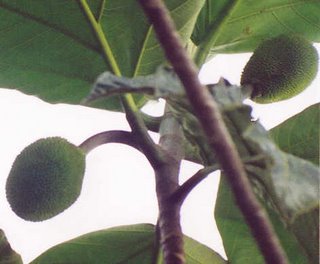
Cake of the Month
As the family marks my third child’s progress onto her first year, I will be celebrating her monthly birth day in this blog by featuring a cake. Lined up for the next twelve months, and hopefully on afterwards, are old-time favorites, reliable standards, as well as new discoveries, as I go on a quest for the best cakes around the country.
In Metro Manila, the best caramel cake is synonymous with the name Estrel's. Estrel's has been using a turn-of-the-century recipe for its caramel cakes since 1946, and has not made any change in the ingredients and process. In fact, the cakes are totally preservative-free, and have only two days shelf life, so the staff insist that you get your caramel cake on the day you're going to serve them.
Avowals and testimonies abound in the internet. It is also one of the most written about in printed media and sworn-to cakes in foodie circles. The following is almost fanatic in nature.
I got introduced to Estrel's by a doctor, who bought the cake for the birthday of a friend. I had to mention this fact because Estrel's caramel cake is very, very lightly sweetened that the caramel flavor is so subtle - the exact opposite, the perfect anti-thesis, to the usual and more commonly known throat-inflaming, diabetes-triggering, sticky-sweet caramel.

Estrel's caramel cake is vanilla chiffon with a whiff and a hint of lemons, dressed with a very, very thin icing of a superlative caramel spread, and finished off with butter roses and whimsically piped curlicues and scallops of buttercream that is a well-known trademark.
To me, Estrel's is the finest cake there is. The caramel cake is akin to a lady, nay, a princess of the highest pedigree. The use of high-quality ingredients is most evident, as is the utmost care in baking and icing, to the way the staff respect their product.
There is no other chiffon as soft, as light and delicate, yet so full of flavor in every forkful, as Estrel's. And the caramel - a paper thin, golden tan rendition of sugar, butter and cream that's lip-smackingly wet, but not gooey, and by all purposes graceful, if I may use the word.

As I said Estrel's caramel cake is a lady. An elegant lady, not a girl. The fineness of it all may be lost on those who cannot appreciate the subtlety of flavors and the refined mouthfeel. The caramel may not be sweet enough, nor thick enough for those used to the sweeter, rougher, side of things.
But it's a toothsome. There's a certain lusciousness to it, though still in a very restrained manner. It is beauty, and grace, embodied in a cake.
Avowals and testimonies abound in the internet. It is also one of the most written about in printed media and sworn-to cakes in foodie circles. The following is almost fanatic in nature.
I got introduced to Estrel's by a doctor, who bought the cake for the birthday of a friend. I had to mention this fact because Estrel's caramel cake is very, very lightly sweetened that the caramel flavor is so subtle - the exact opposite, the perfect anti-thesis, to the usual and more commonly known throat-inflaming, diabetes-triggering, sticky-sweet caramel.

Estrel's caramel cake is vanilla chiffon with a whiff and a hint of lemons, dressed with a very, very thin icing of a superlative caramel spread, and finished off with butter roses and whimsically piped curlicues and scallops of buttercream that is a well-known trademark.
To me, Estrel's is the finest cake there is. The caramel cake is akin to a lady, nay, a princess of the highest pedigree. The use of high-quality ingredients is most evident, as is the utmost care in baking and icing, to the way the staff respect their product.
There is no other chiffon as soft, as light and delicate, yet so full of flavor in every forkful, as Estrel's. And the caramel - a paper thin, golden tan rendition of sugar, butter and cream that's lip-smackingly wet, but not gooey, and by all purposes graceful, if I may use the word.

As I said Estrel's caramel cake is a lady. An elegant lady, not a girl. The fineness of it all may be lost on those who cannot appreciate the subtlety of flavors and the refined mouthfeel. The caramel may not be sweet enough, nor thick enough for those used to the sweeter, rougher, side of things.
But it's a toothsome. There's a certain lusciousness to it, though still in a very restrained manner. It is beauty, and grace, embodied in a cake.

Estrel's
Scout Tobias corner Scout Limbaga Streets
Barangay Laging-Handa, Quezon City
Tel. Nos. (632) 3722965, 3717938
Website
In photo, 8"x12" with filling (caramel in between two layers) Php750
Without filling less Php100
Cakes of the Month
Divine Chocolate Cake, by Divine Sweets (Puerto Princesa, Palawan)
Cakelines, by Jon-Rhiz (Cavite City)
Dayap Chiffon Cake, by Kiss Cafe (UP Diliman, Quezon City)
Belgian Chocolate Cake, by a La Creme (City of San Fernando, Pampanga)
White Chocolate Mousse, by Gateau de Manille (Katipunan Avenue, Quezon City)
Mango Cake, by Red Ribbon (with outlets all across the country)
Ube Cake, by Goodies and Sweets (several locations across Metro Manila)
Mango Charlotte by Sweet Bella (Dasmarinas Village, Makati City)
Strawberry Cake by Vizco’s (Baguio City)
Almond Chocolate Fudge Cake by Malen's (Noveleta, Cavite)
Marshmallow Birthday Cake by Estrel's (Quezon City)


















